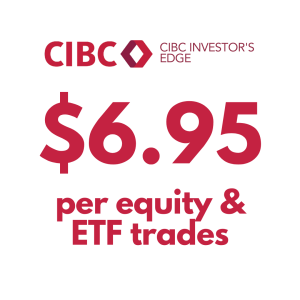
Canadians have two main sources of income they must declare and pay taxes on. Income from employment or self-employment are the most common. But another type of income is dividends, which is a form of investment income. In Canada, there are eligible vs non-eligible dividends and each has its own tax implications.
Do you have a few Apple or Tesla stocks? Or maybe blue-chip stocks, shares in stable businesses like banks? Every month, quarter or year, you might earn dividends on your shares. Depending on the size of your portfolio and what kinds of stocks you own, the amount of dividends you earn can vary a lot.

Table of contents
Here’s the thing: dividends are taxable. We’ll walk you through eligible and non-eligible dividends, what you owe for taxes, and how to avoid paying as much of those taxes as possible. Let’s start with the basics:
What is a dividend?
A dividend is a lump sum profit you earn from your owned shares in corporations. Essentially, it’s a distribution of profits to shareholders as a way to reward them for investing in the company. Both private and public companies can issue dividends, but most receive them from publicly traded companies. Most corporations pay out dividends every quarter, though some pay monthly or annually.
Related Reading: Is CPP Taxable Income?
CIBC Investor’s Line Offer
Up to $6.95 per online stock or ETF trade. Plus, there’s no minimum account balance.
Eligible vs Non-Eligible Dividends: What’s the difference?
Apart from payout schedules and amounts, dividends also differ in eligibility. Let’s explore eligible and non-eligible dividends.
What is an eligible dividend?
Eligible dividends are paid to Canadian investors from a Canadian corporation. They are designated as eligible dividends by the corporation based on their status. Normally, their status is determined by annual income with the threshold being $500,000 or more. Since these corporations pay higher taxes than your average small business, investors who receive eligible dividends pay a more favourable tax rate and receive a more substantial credit (more on this shortly).
What is a non-eligible dividend?
Non-eligible dividends are dividends paid to Canadian investors from lower-income Canadian businesses, specifically businesses that generate under $500,000 in net income each year. These businesses are usually eligible for the Small Business Deduction and are considered CCPCs (Canadian Controlled Private Corporations).
Related Reading: Best Monthly Dividend Stocks in Canada for 2022
Are my dividends eligible or ineligible?
The CRA advises individuals to contact the company from whom they purchased the shares if they aren’t sure whether your dividends are eligible or non-eligible.
You might browse through the company’s website for their annual reports to find out whether they made over $500,000 this past tax year. However, not all companies publish their financial data (this is only required for publicly traded companies) so you might have to reach out to the entity for more information.
How do you know if dividends are eligible?
Dividends are eligible when they are paid from a Canadian corporation to a Canadian investor. In addition, the company in question must be earning an annual income of $500,000 or more. Often, they are publicly traded as well, but that’s not always true. In other words, eligible dividends paid from private corporations is possible, not just public companies.
Eligible vs. Non-Eligible Dividends: Tax Implications
Eligible and non-eligible dividends qualify you for different tax rates and benefits. Let’s take a closer look below.
Do you pay tax on eligible dividends?
Yes, you must pay tax on eligible dividends. However, the tax rate is lower than your usual employment income. Additionally, the tax rate will be lower than non-eligible dividends because the higher-income company has already paid more taxes on their income.
Do you pay tax on non-eligible dividends?
Yes, you must pay taxes on non-eligible dividends. You’ll be subject to a higher tax rate (or smaller tax credit amount) because the corporations paying out non-eligible dividends don’t pay as much in taxes as the corporations who pay out eligible dividends.
Related Reading: Best Canadian Dividend Stocks
What is the tax rate on dividends in 2022?
Tax rates on dividends vary slightly from year to year. The tax rate on eligible dividends for 2022/2023 depends on your province or territory of residence and dividend amount. Below are the federal rates as a starting point.
| Taxable Income | 2022 Eligible | 2022 Non-eligible |
| $0 to $53,359 | -0.03% | 6.87% |
| $53,359 to $106,717 | 7.56% | 13.19% |
| $106,717 to $165,430 | 15.15% | 19.52% |
| $165,430 to $235,675 | 19.73% | 23.41% |
| $235,675 and over | 24.81% | 27.57% |
Here’s a table demonstrating how to calculate your tax credit on dividends for 2022:
| Eligible Dividend Amount | Dividend Amount Beyond Eligible Amount |
| Check the taxable dividend amount you reported on line 12000 on your tax return. Multiply the amount by 15.0198%. | Check the taxable dividend amount you reported on line 12010 on your tax return. Multiply the amount by 9.0301%. |
Related Reading: Best Dividend ETFs in Canada for 2022
How do I avoid paying tax on dividends?
Dividends are already taxed less than regular employment income. In addition, dividends are taxed more favourably than other forms of investment income, such as interest or capital gains. However, you can avoid paying tax on dividends with some of these strategies:
- Invest in successful, publicly traded companies: You might be tempted to invest in your favourite, up-and-coming startup. However, you’ll be penalized with more taxes than if you were to pick an established, high-revenue company like Apple or Enbridge. Browse through the stock exchange to think of big brands you can stand by for investments. You’ll receive a greater tax credit at a rate of 15% as opposed to the lower 9%.
- Find the right deductions: Do you guess your eligible deductions every time you file taxes, or does your accountant help you review each possibility with you? Getting a handle on your deductions can decrease your overall tax liability.
- Income split: If you’re well into retirement, you might consider income splitting with your significant other.
Dividends are a great source of passive income with smaller tax liabilities than employment or other types of investment income. Try your best to maximize tax benefits through eligible dividends and reduce your liability with deductions.
Read More: Guide to Tax Credits: How to Get a Bigger Tax Refund


